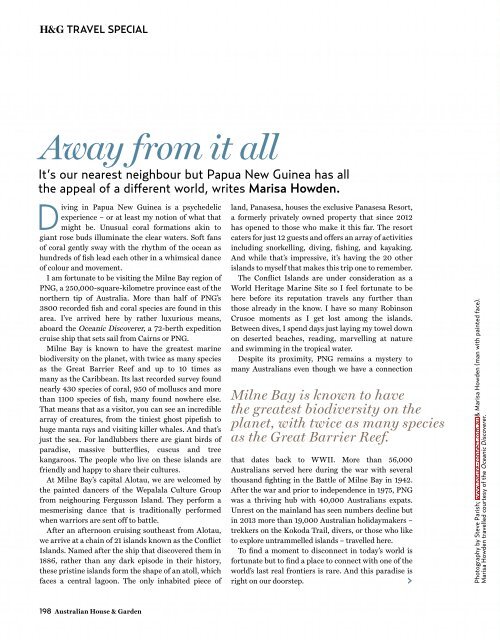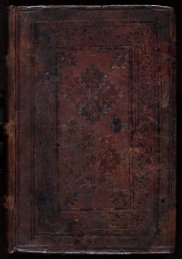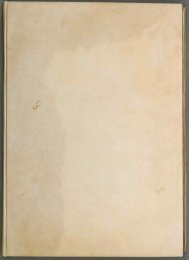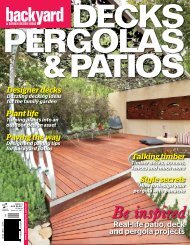REVELATIONS
Create successful ePaper yourself
Turn your PDF publications into a flip-book with our unique Google optimized e-Paper software.
H&G TRAVEL SPECIAL<br />
Away from it all<br />
It’s our nearest neighbour but Papua New Guinea has all<br />
the appeal of a different world, writes Marisa Howden.<br />
Diving in Papua New Guinea is a psychedelic<br />
experience – or at least my notion of what that<br />
might be. Unusual coral formations akin to<br />
giant rose buds illuminate the clear waters. Soft fans<br />
of coral gently sway with the rhythm of the ocean as<br />
hundreds of fish lead each other in a whimsical dance<br />
of colour and movement.<br />
I am fortunate to be visiting the Milne Bay region of<br />
PNG, a 250,000-square-kilometre province east of the<br />
northern tip of Australia. More than half of PNG’s<br />
3800 recorded fish and coral species are found in this<br />
area. I’ve arrived here by rather luxurious means,<br />
aboard the Oceanic Discoverer, a 72-berth expedition<br />
cruise ship that sets sail from Cairns or PNG.<br />
Milne Bay is known to have the greatest marine<br />
biodiversity on the planet, with twice as many species<br />
as the Great Barrier Reef and up to 10 times as<br />
many as the Caribbean. Its last recorded survey found<br />
nearly 430 species of coral, 950 of molluscs and more<br />
than 1100 species of fish, many found nowhere else.<br />
That means that as a visitor, you can see an incredible<br />
array of creatures, from the tiniest ghost pipefish to<br />
huge manta rays and visiting killer whales. And that’s<br />
just the sea. For landlubbers there are giant birds of<br />
paradise, massive butterflies, cuscus and tree<br />
kangaroos. The people who live on these islands are<br />
friendly and happy to share their cultures.<br />
At Milne Bay’s capital Alotau, we are welcomed by<br />
the painted dancers of the Wepalala Culture Group<br />
from neighouring Fergusson Island. They perform a<br />
mesmerising dance that is traditionally performed<br />
when warriors are sent off to battle.<br />
After an afternoon cruising southeast from Alotau,<br />
we arrive at a chain of 21 islands known as the Conflict<br />
Islands. Named after the ship that discovered them in<br />
1886, rather than any dark episode in their history,<br />
these pristine islands form the shape of an atoll, which<br />
faces a central lagoon. The only inhabited piece of<br />
land, Panasesa, houses the exclusive Panasesa Resort,<br />
a formerly privately owned property that since 2012<br />
has opened to those who make it this far. The resort<br />
caters for just 12 guests and offers an array of activities<br />
including snorkelling, diving, fishing, and kayaking.<br />
And while that’s impressive, it’s having the 20 other<br />
islands to myself that makes this trip one to remember.<br />
The Conflict Islands are under consideration as a<br />
World Heritage Marine Site so I feel fortunate to be<br />
here before its reputation travels any further than<br />
those already in the know. I have so many Robinson<br />
Crusoe moments as I get lost among the islands.<br />
Between dives, I spend days just laying my towel down<br />
on deserted beaches, reading, marvelling at nature<br />
and swimming in the tropical water.<br />
Despite its proximity, PNG remains a mystery to<br />
many Australians even though we have a connection<br />
Milne Bay is known to have<br />
the greatest biodiversity on the<br />
planet, with twice as many species<br />
as the Great Barrier Reef.<br />
that dates back to WWII. More than 56,000<br />
Australians served here during the war with several<br />
thousand fighting in the Battle of Milne Bay in 1942.<br />
After the war and prior to independence in 1975, PNG<br />
was a thriving hub with 40,000 Australians expats.<br />
Unrest on the mainland has seen numbers decline but<br />
in 2013 more than 19,000 Australian holidaymakers –<br />
trekkers on the Kokoda Trail, divers, or those who like<br />
to explore untrammelled islands – travelled here.<br />
To find a moment to disconnect in today’s world is<br />
fortunate but to find a place to connect with one of the<br />
world’s last real frontiers is rare. And this paradise is<br />
right on our doorstep. ><br />
Photography by Steve Parish; www.nature-connect.com.au & Marisa Howden (man with painted face).<br />
Marisa Howden travelled courtesy of the Oceanic Discoverer.<br />
198 Australian House & Garden








